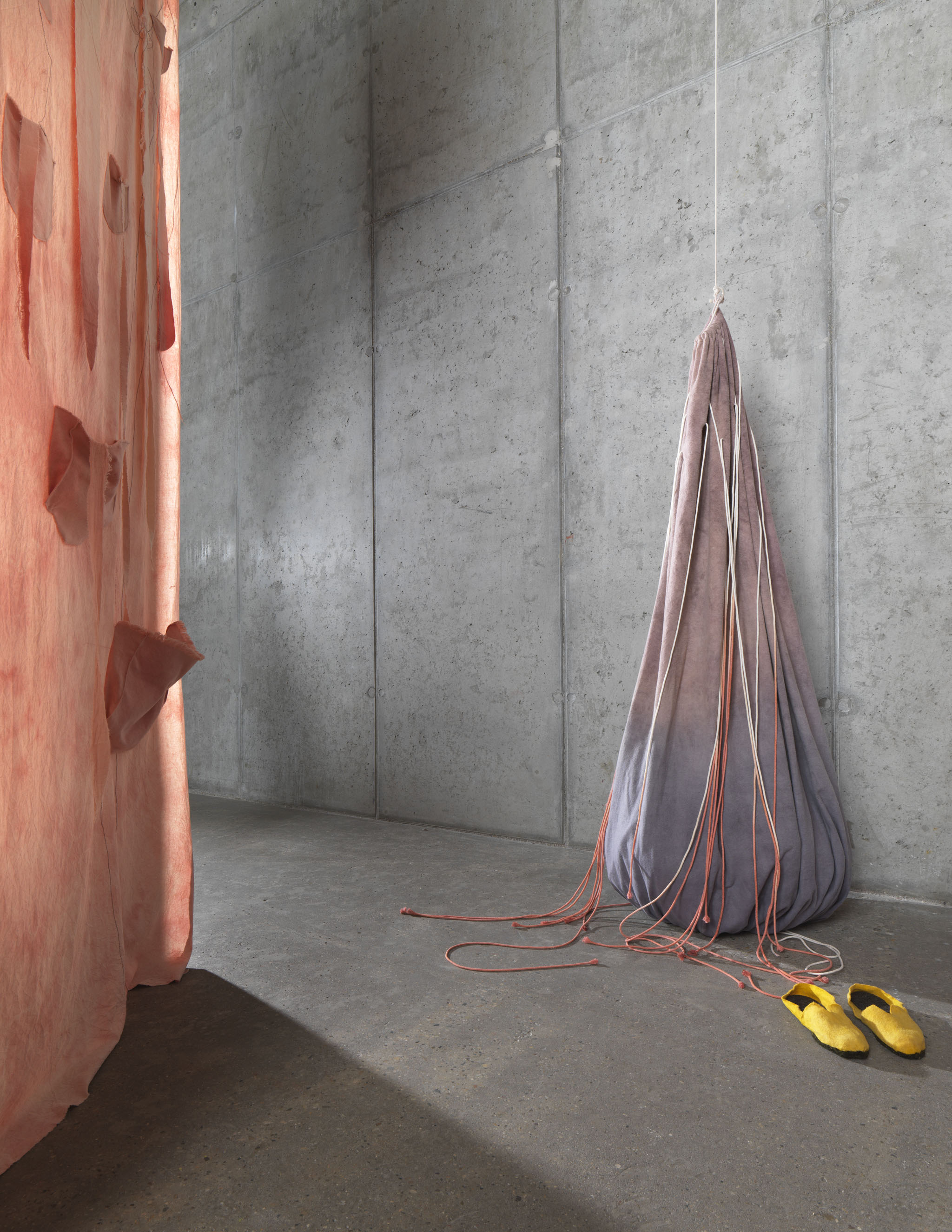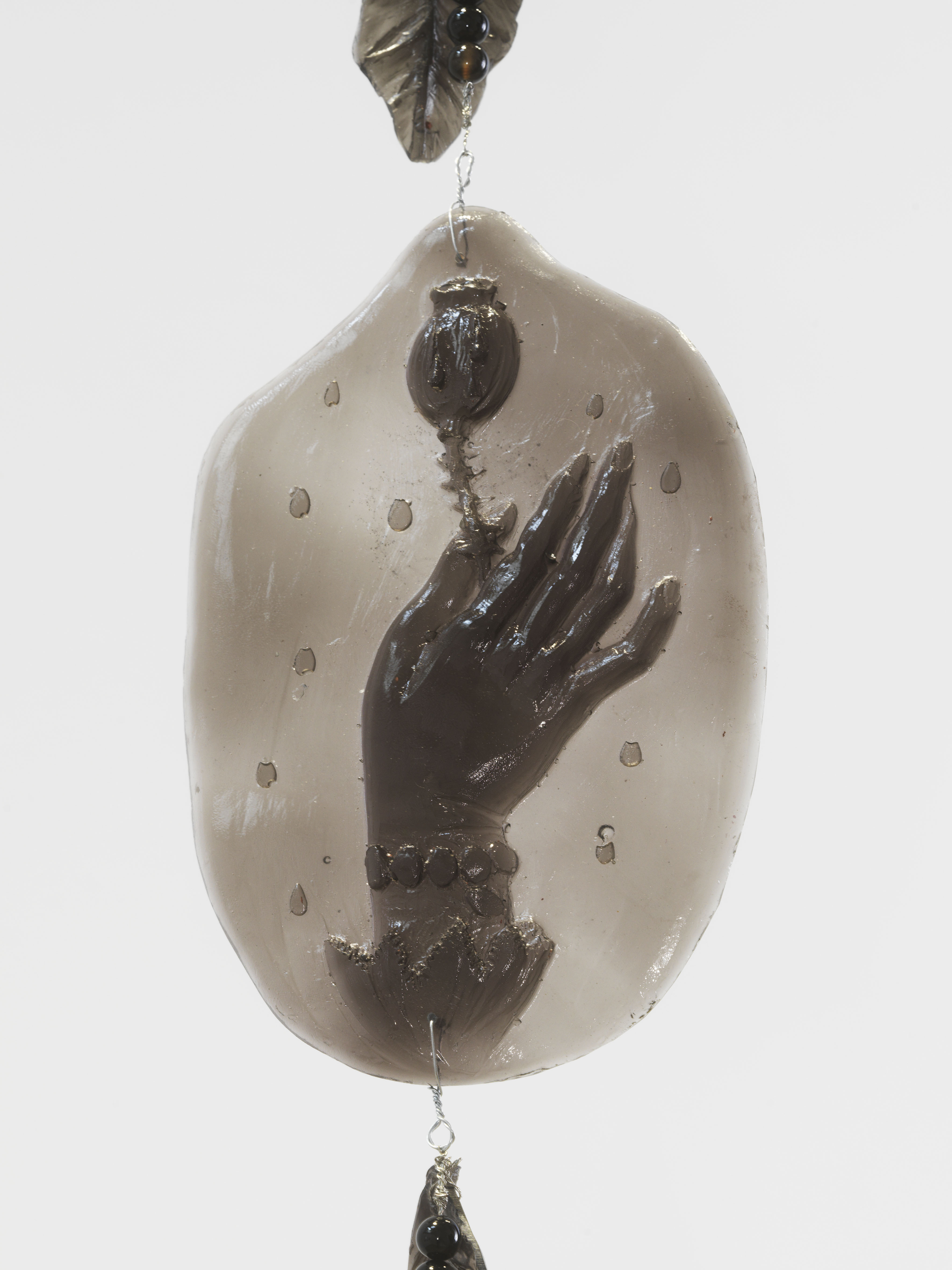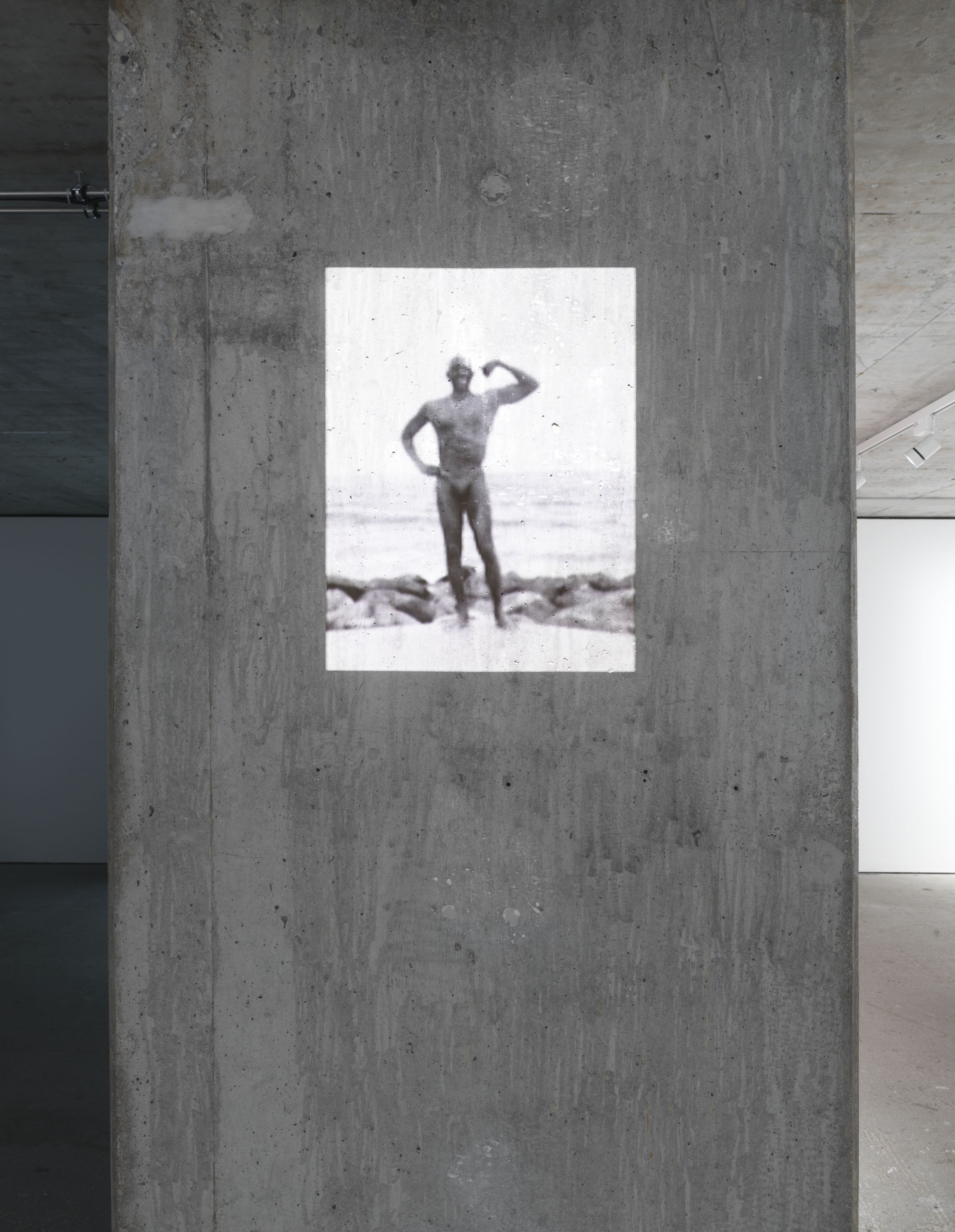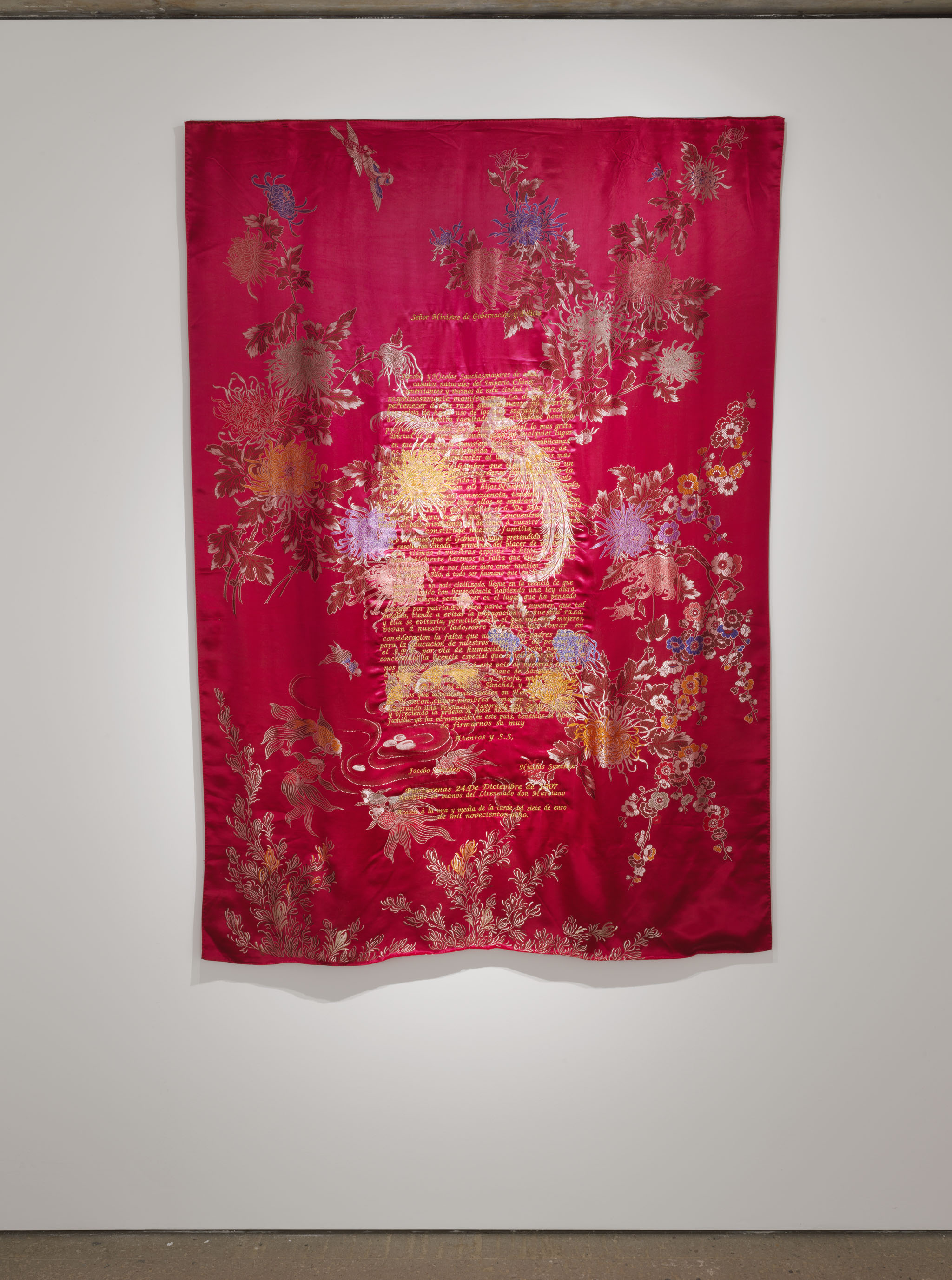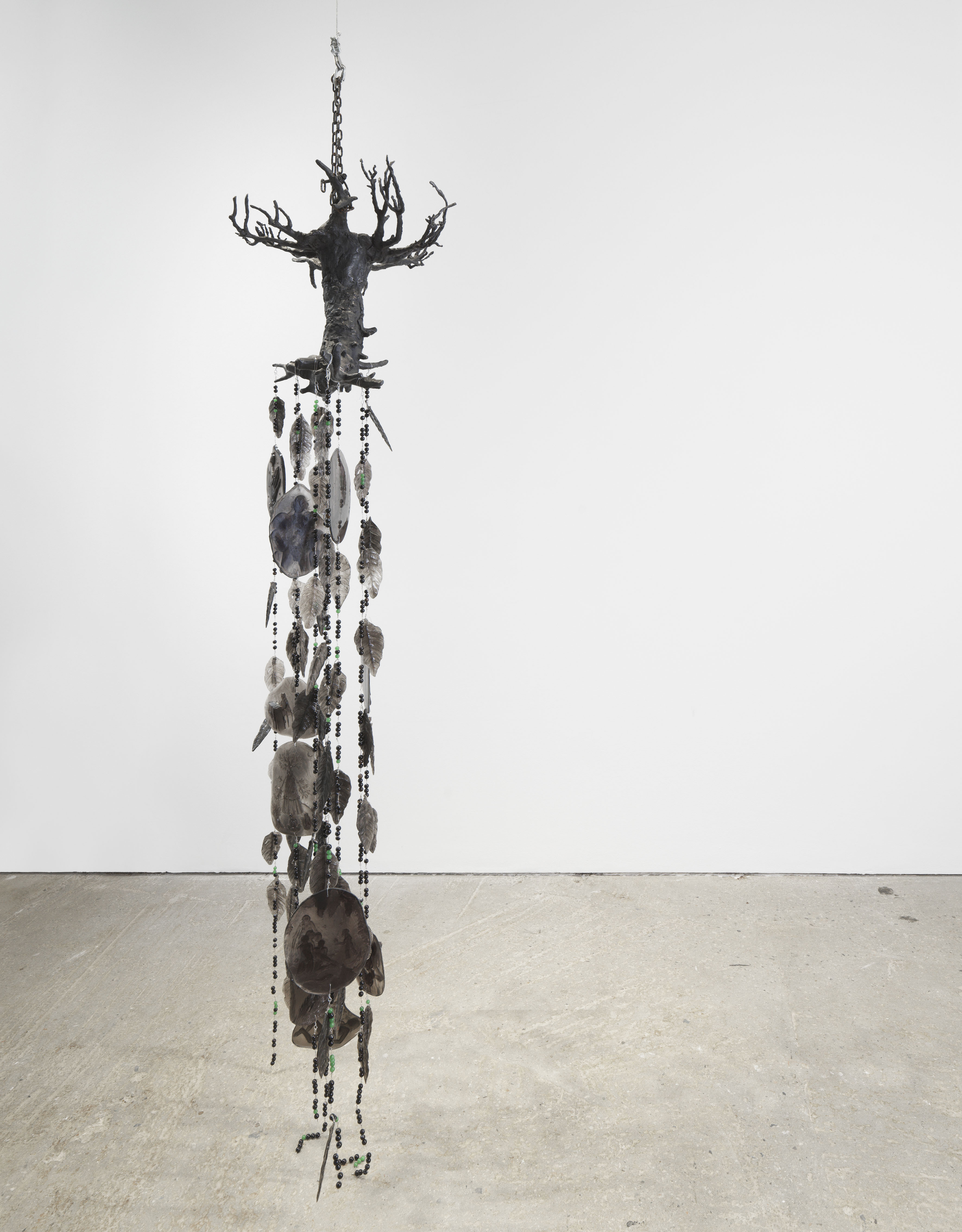Naufus Ramírez-Figueroa
Chiperrec
2021
Sculpture, bronze and resin
110 x 180 cm
65 kg
Commissioned by Times Art Center Berlin
Courtesy of the artist
Chiperrec is a hanging installation consisting of a deformed and dwarfed Camellia sinensis tree cast in bronze. The form and size of the tree is inspired by the tea producing trees in the Chiperrec Cooperative in Alta Verapaz, Guatemala. The cooperative's plantation holds some of the oldest tea trees in the Americas, brought from India by German companies working in Guatemala in the middle of the nineteenth century. Strings of beads in the shape of leaves hang from the suspended bronze sculpture; dispersed among the beads are a series of semitransparent resin cast plaques. These plaques are carved in low relief and show vignettes of the story of tea: from its early cultivation and cultural significance for ethnic groups in China; to the espionage and cruelty of Britain to attain tea trees and break the monopoly of China as tea producer; the importation of tea trees to Guatemala by Germans; the accusations of the US government in the 1940s of money from German-owned companies in Guatemala aiding the army of the German Reich; the expropriation of these companies and plantations following the end of World War II; and, finally, the creation of a tea-growing cooperative following these expropriations. The Chiperrec Cooperative is owned and run by Kekchi-Maya women, and dedicates itself to growing, harvesting, and selling tea to the Guatemalan market, where it has become a household name, "Té Chiperreco." The cooperative also tries to promote appreciation and awareness of Kekchi culture, and the land where the plantation is located, which is home to a number of caves that are sacred to the Maya people. The name of the plantation, Chiperrec, means "at the side of a cave" in Kekchi.
